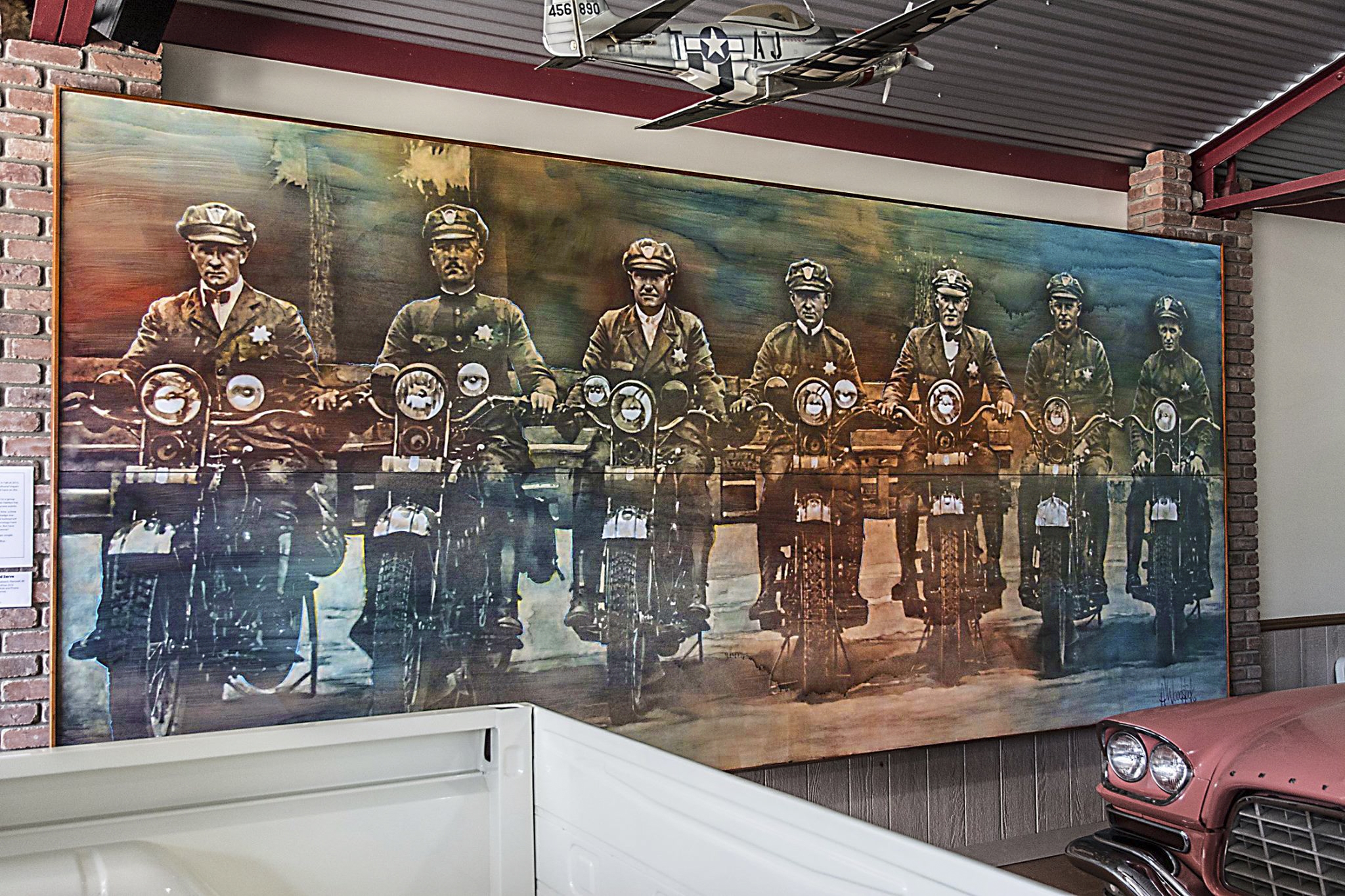Andrew Woodstock has garnered national attention for his work. In 2012, his entry Tuskegee Airmen placed in the Top 50 in ArtPrize and now the large-scale watercolor piece resides in its new home at the Kalamazoo Air Zoo. His 2016 ArtPrize entry was a little more colorful, but used the same technique as his 2012 Tuskegee Airmen and 2014’s Civil War. Honors and awards include being a featured artist at the Society of Illustrators in New York City and winning ADDY Awards for Excellence in Illustration.
What serves as your inspirations when creating a piece?
I always want the viewer to feel an emotion they did not feel before they stood in front of my work. I have a passion for American history and aviation, so most of my artwork reflects this. I work from photos, and love vintage. If I come across a photo that moves me emotionally, I want to also move the viewer in the same way.
What is your favorite medium to work in, and why?
I guess my favorite medium is pencil and watercolor. I love to work large — in fact my ArtPrize pieces are at least seven to eight feet tall and 16 feet wide. I feel the technique can sometimes be much more interesting than the subject, and when a piece is large, you really get to see more than just the subject. Most of my work starts with a watercolor canvas with an acrylic wash (to get rid of the white). This step is followed by a pencil outline of the subject, then a watercolor wash over the entire canvas. Sometimes I use one hue, and sometimes multiple hues. When the watercolor is dry, I am able to pull highlights with a wet brush or rag. Then I go over the piece with an HB or number-2 pencil to put in my darks. When that step is completed, I use prisma pencils to add white and accent colors that help add interest and draw the eye to key areas.
How long does it take you to create a piece from start to finish, and how do you get started?
It depends on the size of the piece. An ArtPrize-size piece takes nine to 12 months. I always work from a photo or photos, taking artist liberties by changing what I think will improve the piece on a large scale. I start by going through lots and lots of photos, or I may remember a photo I have filed away. I like to work from originals if possible, but that is not always the case. Once I find a photo that I connect with emotionally and can see it finished in my mind's eye, I build my framework for the canvas. This is a process in itself, two four-foot by 16-foot panels bolted together, covered with an eighth-inch sheet of plywood and watercolor canvas. It usually uses up all the horizontal and vertical space in my studio.
What was it like for you to be an exhibiting artist in ArtPrize?
I have entered Artprize five times and have been fortunate to be voted into the Top 50 or better for three of the five years. ArtPrize is exhausting, and fun. In the right venue, you get to meet thousands of people as well as other artists. If you are there to promote yourself and your art, you should plan on being there every day, especially during the first round voting period.
What has being in ArtPrize done for you as an artist and a person?
As an artist, I have gained local notoriety and I have also sold prints and original pieces. As a person, I now realize the passion that I put into my work is able to create an emotion within the viewer, which is very fulfilling to me as an artist. I have also been able to network with other artists and have made new friends.
What is something people would be most surprised to know about you?
I’m also a pilot.
What would you like our readers to come away with?
I have been a graphic designer and artist all my life. The graphic designer side has always paid the bills, while the fine art side (which I love) has been more difficult to sell. I’ve been the proverbial starving artist. Now that I am older, my larger work is selling, thanks to exposure and maybe a more positive attitude. My wife Sherry has also been very supportive and instrumental in marketing my work.





